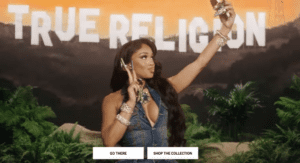In a time where people trust recommendations from friends and family over all other forms of marketing, word of mouth should be a cornerstone of any brand’s marketing strategy. Word of mouth works when you get influencers to spread interesting, relevant, and authentic stories about your brand or product. As marketers, we need to focus on what the story is and where we’re going to throw that story into the water.
You might think you know exactly where to throw your story, but not all communities are created equal. Before you waste your time talking to a community that won’t help spread your story, you need to evaluate and grade them. To do so, rate them on four criteria.
- Strength of Communication
 When grading a community, look for signs that its members maintain tight bonds with one another, and that they are passionate enough to hungrily consume and pass on any relevant information about the topic at hand.
When grading a community, look for signs that its members maintain tight bonds with one another, and that they are passionate enough to hungrily consume and pass on any relevant information about the topic at hand.
A few years ago, a giant U.S.-based telcom spread the word about its 4G LTE mobile Internet connection. The goal was to move customers from 4G, which had become crowded and sluggish, to 4G LTE, which was new and moved at lightning speeds.
The brand needed to find communities that would care deeply about faster Internet speeds. One of the more surprising groups we came up with was hairstylists. Why hairstylists? They are very strong communicators who love to share professional tips and maintain vast, complex networks of colleagues and references. So when hairstylists spread the news, they aren’t just talking to the guy one chair over. They’re talking to their coworkers from two, three salons ago.
Photos are very important to hairstylists too. There are two reasons for this: One, because they change salons so often, smart stylists maintain a “lookbook” with photos of all their best hair- dos. The easier it is to shoot and upload high-quality pictures, the easier it is for them to maintain their portfolio.
Two, stylists are frequently asked to re-create a hairstyle from the pages of a magazine. But for the stylists, a single picture of a hairdo doesn’t necessarily contain enough information for them to work with. What does it look like from the back? Or the top
We gave a bunch of hairstylists 4G LTE tablets to use for a couple of weeks. Word spread quickly among the stylists that this tool could both save them time and make their customers happy. Before we knew it, salon owners were coming to us saying they had heard about these tablets, and they wanted them for their own salon. Those owners were so pleased that they equipped their whole shops with 4G LTE.
One other thing we knew about stylists from the beginning was that their customers put a lot of trust in them. So when these women saw their stylists using the 4G LTE tablets, they took that as a very easy and natural recommendation from a trusted source. Stylists are really strong communicators, even if they aren’t what you might traditionally think of as a “community.”
- Speed of Communication
Flight attendants talk to each other during takeoff or landings, or between beverage services. Bartenders talk to waiters having a drink after their shifts end. People in groups like these will spread information faster than those who need to go out of their way to find time to talk to one another.
When looking at a community, ask yourself, How practiced are these people at sharing stories with one another? Are there established routines among them for passing on information? Think about every cop show you’ve ever seen, when the captain stands in front of the force each morning and runs down the list of the day’s threats. Or nurses passing on patient information at the end of their shifts. These routines ensure that information will be passed on in a timely manner.
- Age of the Community
A community with an Internet forum that nobody visits is not really a community. So ask yourself, How well established is this community? Do its members meet once a month? Do they talk daily? Or do they only share stories when they see each other at conventions once a year?
You want to work with communities that have a reason to exist beyond you. You want people who are showing up as often as they can because the more they show up, the more they will share stories. Word of mouth is ultimately a numbers game—you need a lot of people to share your story, so a lot of other people will buy your stuff. It matters that these people truly exist as a community in spirit as well as name.
- Authenticity
Members of an authentic community are there because they love the topic and want to be around others who share their passion. An authentic community consists of people who would lose or spend money to be part of it if they had to. The more that members of a community are being compensated, the less authentic the community.
One of the most authentic communities I have ever seen is around the video game Civilization by Sid Meier. It’s a complicated game with a dedicated following. This particular online message board was started by a guy who had no connection to the company that manufactured the game. But he was passionate about this game, so in his spare time, he moderated this board.
At first, people visited this message board to get tips playing the game. But as time went on, the board attracted so much attention from Civilization fans that it became a base for organizing meetups and tournaments. It evolved into the de facto Civilization clubhouse—all because people were attracted to the proprietor’s very real love of the game. Other players could sense that he took it as seriously, if not more so, than they did, and they knew that he was in it for the pure love of it and not any kind of compensation. It was an authentic community, and that attracted more and more people with a real interest in the topic.
When it comes to word of mouth, you have to throw your bait – your story – to the fish who want it the most. Keep these four criteria in mind when evaluating your communities, and you’ll be well on your way to catching the right fish.
Ted Wright is CEO of word-of-mouth marketing firm Fizz and author of “Fizz: Harness the Power of Word of Mouth Marketing to Drive Brand Growth” (McGraw-Hill).




 Network
Network

